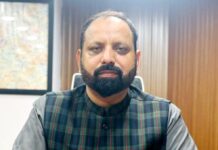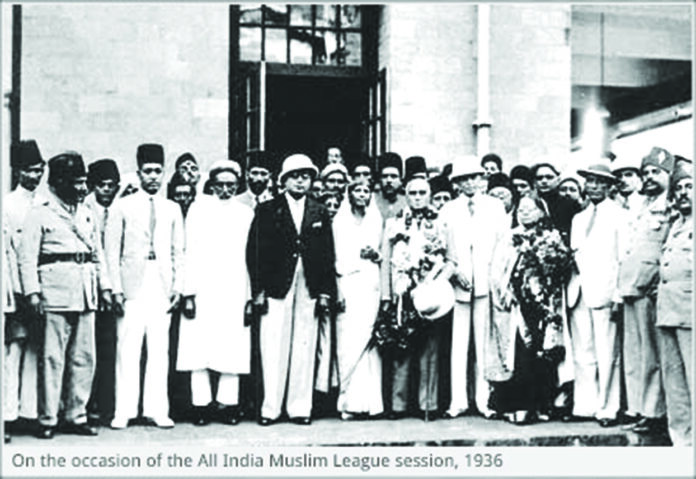Pakistan by every definition is a nation and this nation has never questioned the very rationale of the existence of India. While Indians in scores have questioned Pakistan’s existence since Day One of the independence of the South Asian rival states.
Javed Jabbar, a Pakistani author and politician, states that India was never a state. The Subcontinent is a region that got independence from Britain in mid-August 1947. Eventually, Pakistan and India came on the map of the world. Despite this fact, many question their freedom in Pakistan. This piece is particularly for them. It compares the All-Indian National Congress`s rule in the subcontinent between 1937-39 with today`s India.
All Indian National Congress triumphed in five out of eleven provinces and was in a position to make coalition governments in the other two after the 1937 elections, which were held under the provisions of the Government of India Act, 1935. Congress played a major role in the fall of Sir Saadullah`s Government in the province of Assam. It refused to form any coalition government with Muslim League and the fear was raised among Muslims that Congress wanted to establish Hindu Raj in the subcontinent.
Moreover, Congress declared Vande Mataram the national anthem of the subcontinent. Muslims even today have grievances regarding this anthem, let alone being forced to sing it back then under Congress rule in the late 1930s. According to The Hindustan Times, Muslims today refuse to sing Vande Mataram. Though it angers Hindutva ideologues, Muslims consider Vande Mataram against the concept of Tawheed (oneness of Allah). For instance, stanza four of the anthem addresses India as, ‘Thou art Durga, Lady and Queen, with her hands that strike and her swords of sheen, Thou art Lakshmi lotus-throned…’ thus equating India with the Hindu goddesses Lakshmi and Durga while Muslims cannot supplicate to anyone except Allah the Almighty.
The Wardha Scheme was introduced during the Congress Rule (1937-39) in the subcontinent which declared the mother tongue of the populace in certain areas and also Hindi as the medium of instruction in schools. Such an approach raised questions how they would tolerate Urdu-speakers if they were unable to bear Urdu as a language. Bowing before the portrait of Gandhi was made compulsory in many schools, where Muslims were also in large attendance. Remember, Muslims praise Sheikh Ahmad Sirhindi because he refused to bow before the Mughal Emperor Akbar calling it shirk and declaring that Sajda can only be done to Allah the Almighty and no one else.
Cow slaughtering was also banned under Congress`s rule in many parts of the Subcontinent. This sentiment is so ingrained among Hindutva Ideologues that even in today’s secular India, slaughtering a cow attracts life imprisonment in Gujarat. Back then between 1937-39, this ban caused 57 communal riots and over 100,000 recorded casualties in just a short period of two years of the Congress rule in the region.
The mask of secularism and democracy in India is not? Or now? thicker enough to hide the Hindutva narrative behind it. Let it be the Congress rule between 1937-39 or the rule of the BJP in today`s India, secularism has remained an unfulfilled or a false promise in India. To conclude, Muhammad Ali Jinnah rightly stated, “Any idea of a United India could never have worked and in my judgment, it would have led us to [a] terrific disaster.”
In the second half of 1939- the year Congress resigned on the pretext that Britain joined the UK in the Second World War without the consent of Congress or other representative institutions in the Subcontinent. On the orders of Muhammad Ali Jinnah, the All-India Muslim League observed ‘Day of Deliverance’ on 22 December 1939, as they got rid of Congress rule. Thanks to the All-India National Congress’s narrow-mindedness, it had made Muslims of the region realize that division of the Subcontinent was inevitable. Otherwise, many Muslims might have remained in doubt about either being a part of the ‘Quit India’ movement or the ‘Divide and Quit India’ movement.
Those who still ponder whether they were better in a united Subcontinent, can decide after reading this part carefully. First, have a glance at the frontline players in Indian politics today. Number one, Narendra Modi, the current premier of the country. He has the burden of the massacre of over 2,000 Muslims of Gujarat. He gets offended when journalists ask him to say something in his defense in this regard. People like Arnab Goswami, Tariq Fateh, and General Bakhshi are praised in his circles.
Number two, Amit Shah, the current Home Minister of India, and the right hand of Narendra Modi openly claimed during election rallies that they (BJP) will purify India from Bengali Muslims. Number three, Yogi Adityanath, the BJP’s UP CM, and most likely future premier of India, says Hindus are in danger. The Hindus who are in majority in the state and their total number is estimated to be around 1.1 billion today in India are in danger. What logic and what common sense? He also openly defends his argument that wherever Muslims are in majority, no one is safe there. This is the mindset of a public office-holder there.
Second, have a glance at a few facts and figures to analyze whether Muslims that remained in India opted for the right choice or committed a blunder. As per The Indian Express, the illiteracy rate among Muslims in India is 42.7 percent, which is the highest percentage in India. The illiteracy rate among Muslim females is high too. The Karnataka High Court’s recent decision to uphold the Karnataka state`s ban on hijab in classrooms will surely increase the number, as many girls are likely to quit schools or colleges if they are forced to go to classrooms without hijab.
According to the Mumbai Mirror, Muslim residential areas have become dumping yards of medical waste. The Times of India states that the Muslim dropout rate starts at the age of 11. According to The Indian Express, Muslims and Dalits are turned away from buying or renting a house in metropolitan cities of India. As per Al Jazeera, a study reveals that Indian Police feel Muslims are more likely to commit crimes. It also states that 35 percent of personnel feel that it is natural for a mob to punish the culprit in case of cow slaughter.
As per The Indian Express, Muslims, Dalits, and tribals collectively count 39 percent of India’s population whereas over 55 percent of total undertrials in India are either Muslims, Dalits, or tribals. The war crimes of India against Kashmiris, the Supreme Court judgment on the demolition of Babri Masjid, idealogue Hindus securing the highest number of votes in the country, Gau Rakshak Dal, Bajrang Dal, and many such instances are eye-openers for those who do not respect their freedom in Pakistan.
Asaduddin Owaisi, President of All India Majlis-e-Ittehadul Muslimeen and a member of Indian Parliament, rightly states, “We have two political power centers [in India]. One calls Muslims and Dalits as puppies and dogs, the other throws crumbs at us and tells us to wag the tail.” He adds, “Why is it that when I oppose the BJP, I am called an anti-nationalist? I am called a Jinnah in making. When I oppose the secular parties, I am called communal… How is it that these two political parties have appropriated the right [of] nationalism and secularism?”
Now imagine living in such India, which is more like Hindu-istan than Bharat or India. Though there are people in India who believe in peace and democracy rather than in religion-coated politics, Hindutva ideologues seem to outnumber them. Particularly the ones who are in authority, who seem to like it this way. Non-Hindus were never threatened in India as badly as they are today.
The mask of secularism and democracy in India is not? Or now? thicker enough to hide the Hindutva narrative behind it. Let it be the Congress rule between 1937-39 or the rule of the BJP in today`s India, secularism has remained an unfulfilled or a false promise in India. To conclude, Muhammad Ali Jinnah rightly stated, “Any idea of a United India could never have worked and in my judgment, it would have led us to [a] terrific disaster.”























